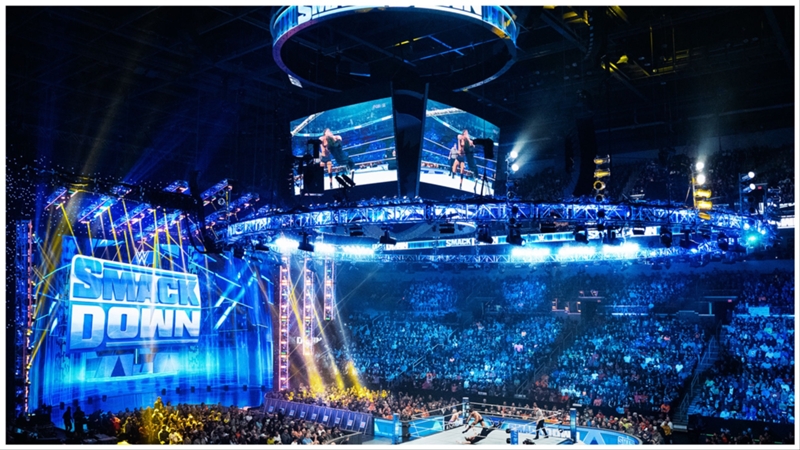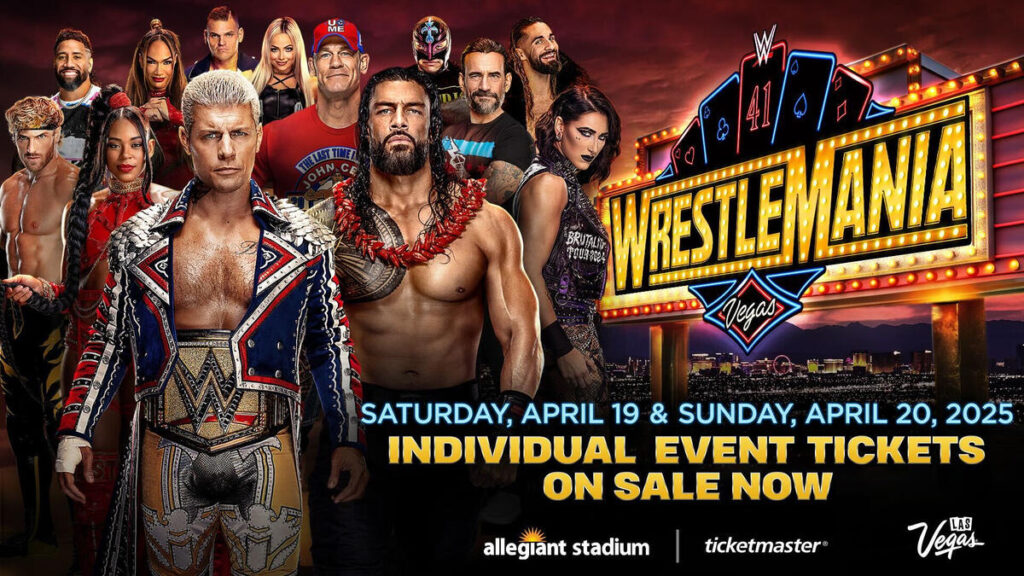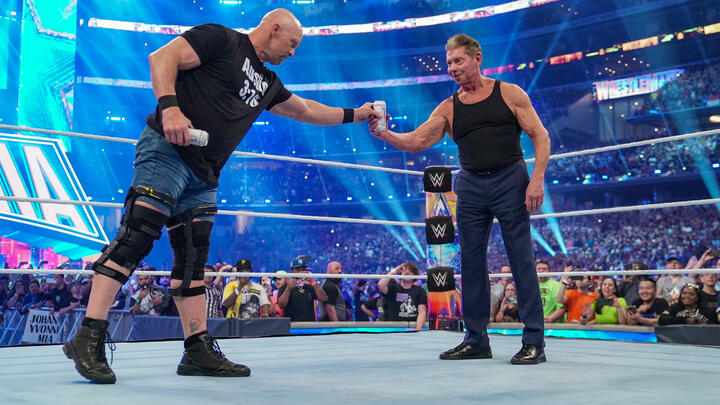WWE: How a Wrestling Company Became a Global Entertainment Icon

WWE: How a Wrestling Company Became a Global Entertainment Icon. The World Wrestling Entertainment (WWE) brand has become synonymous with sports entertainment. However, its success goes far beyond the wrestling ring. The WWE story is one of resilience, innovation, and strategic marketing. From humble beginnings to becoming a global entertainment powerhouse, WWE has continuously adapted to changes in the market while staying true to its roots.
For aspiring entrepreneurs, WWE offers valuable lessons on building a brand that stands the test of time. In this article, we’ll explore the key strategies, turning points, and milestones that helped WWE grow into the cultural phenomenon it is today. We’ll break down its journey with an emphasis on authenticity, strategic marketing, resilience, and growth.

The Early Years: Laying the Foundation with Authenticity and Vision
WWE’s roots trace back to 1952, when it was founded as the Capitol Wrestling Corporation (CWC) by Jess McMahon and Toots Mondt. However, the major turning point for the brand came in 1982 when Vince McMahon, the visionary behind WWE’s global domination, purchased the company from his father. At that time, the company was just another regional wrestling promotion. But McMahon had bigger plans—he wanted to take professional wrestling beyond the confines of regional TV markets.
McMahon understood that the key to success wasn’t just about athleticism or grappling; it was about creating larger-than-life characters that could connect with fans on a deeper level. This led to WWE’s shift toward sports entertainment, blending wrestling with storytelling, drama, and personality. By focusing on creating authentic, relatable characters and offering a platform for them to shine, WWE transformed from a niche sport to a mainstream entertainment juggernaut.
Lesson for Entrepreneurs: Building a brand around authenticity is crucial. McMahon didn’t just promote wrestling matches—he promoted larger-than-life personalities. Identifying and nurturing the unique aspects of your brand and offering customers something more than just a product or service can give your business an edge.
WrestleMania: The Milestone That Changed Everything
One of WWE’s most significant milestones occurred in 1985 with the launch of WrestleMania. The first-ever event was a risk—McMahon took out loans and invested most of the company’s resources to create a spectacle that would change the landscape of wrestling forever. The event was a mix of action, entertainment, and celebrity appearances, setting the tone for how WWE would market its events in the future.
WrestleMania proved to be more than just a wrestling show; it became a pop culture event. The star power of celebrities like Muhammad Ali, Cyndi Lauper, and Hulk Hogan drew mainstream attention and legitimized WWE as an entertainment brand. This expansion into mainstream media marked the beginning of WWE’s transformation from a regional wrestling company to a global entertainment empire.
Lesson for Entrepreneurs: Taking calculated risks and making bold moves can propel your brand into new heights. WrestleMania was a major investment, but it paid off in creating a unique experience that aligned perfectly with WWE’s brand. Think about how you can create an experience or event that aligns with your brand’s values to capture attention and generate buzz.

The Monday Night Wars: Embracing Competition and Innovation
The late 1990s were a turning point for WWE. The company found itself in direct competition with WCW (World Championship Wrestling), a rival promotion that was gaining significant traction. To stay ahead, WWE began to innovate, focusing on more intense storylines, edgier content, and a more diverse roster. This resulted in the “Attitude Era,” a period where WWE embraced edgier themes, vulgarity, and more controversial characters. The era helped catapult WWE to the top of the wrestling world, taking advantage of a cultural shift toward grittier entertainment.
The success of the Attitude Era helped WWE not only survive but thrive during the “Monday Night Wars”—a period where WWE and WCW competed head-to-head for viewership. WWE’s ability to adapt to market demands and embrace new forms of storytelling was a key factor in their victory. In 2001, Vince McMahon’s company purchased WCW, solidifying WWE’s position as the dominant force in professional wrestling.
Lesson for Entrepreneurs: Competition can be a powerful motivator. WWE’s ability to innovate during the “Monday Night Wars” demonstrated the importance of adaptability. When facing competition, think about how you can evolve your product or service to meet changing customer expectations. Embrace creativity and look for opportunities to differentiate your brand.
Expansion and Diversification: Going Global and Beyond Wrestling
WWE’s success has always been about more than just wrestling. The company has effectively diversified its brand over the years, creating a global presence. WWE expanded internationally, creating an audience in countries like Canada, Mexico, and the UK. The brand also branched out into other forms of entertainment, including movies, video games, and television programming.
The company’s ability to adapt to different markets and expand its brand has allowed it to become a household name worldwide. WWE also made a significant move into digital media with the launch of the WWE Network in 2014, an over-the-top subscription-based service. This shift allowed the company to reach a new generation of fans, offering on-demand access to its vast library of content.
Lesson for Entrepreneurs: Expansion is crucial for growth. Diversifying your brand and reaching new markets, whether geographically or through new media, opens up opportunities for revenue and long-term success. Consider how you can extend your brand into complementary areas and use technology to meet the needs of new audiences.

The WWE Brand Today: Resilience in the Face of Challenges
Even with WWE’s monumental success, the brand has faced significant challenges. From the rise of UFC as a competitor to the fluctuating popularity of professional wrestling, WWE has had to constantly adapt. The company has dealt with controversies, changes in the media landscape, and evolving consumer preferences. But through it all, WWE has maintained its core identity of being the “first and best” in sports entertainment.
WWE has shown remarkable resilience, continuing to evolve its programming while staying true to the essence of what made it successful in the first place. Today, WWE continues to thrive, with a massive fanbase, lucrative partnerships, and a global brand presence.
Lesson for Entrepreneurs: Resilience is key. No brand or business is immune to challenges, but the ability to bounce back, adapt, and stay focused on your mission is what separates successful companies from those that fail. Always be prepared for setbacks, and use them as learning opportunities to come back stronger.
Conclusion: Building a Timeless Brand with WWE’s Blueprint
WWE’s rise to global prominence offers valuable lessons for entrepreneurs looking to build a strong, lasting brand. From authenticity and risk-taking to resilience and strategic marketing, WWE has navigated the challenges of a competitive industry while staying true to its core values. The brand’s ability to diversify, adapt, and maintain its identity is a testament to what it takes to succeed in a rapidly changing market.
For aspiring entrepreneurs, WWE’s story is an inspiring example of what can happen when you’re willing to innovate, take risks, and most importantly, stay authentic. Use these lessons to fuel your own brand’s journey and unlock the potential for growth, resilience, and success.



